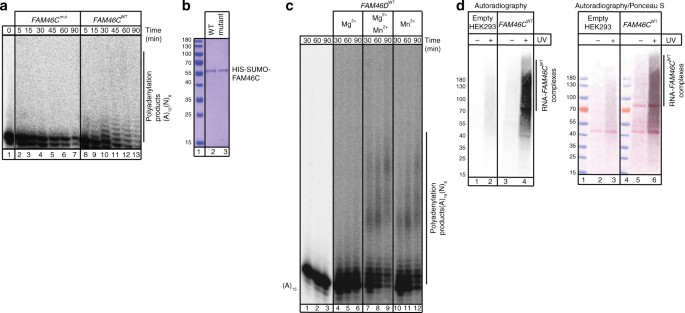
Wei MH, Toure O, Glenn GM, Pithukpakorn M, Neckers L, Stolle C et al (2006) Novel mutations in FH and expansion of the spectrum of phenotypes expressed in families with hereditary leiomyomatosis and renal cell cancer. doi: 10.1542/peds.2012-3680Īlam NA, Barclay E, Rowan AJ, Tyrer JP, Calonje E, Manek S et al (2005) Clinical features of multiple cutaneous and uterine leiomyomatosis: an underdiagnosed tumor syndrome. Fam Cancer 9:239–243Ĭommitte on Bioethics, Committee on Genetics, the American College of Medical Genetics and Genomics Social, Ethical and Legal Issues Committee (2013) Ethical and policy issues in genetic testing and screening of children. Fam Cancer 13:637–644Īlrashdi I, Levine S, Paterson J, Saxena R, Patel SR et al (2010) Hereditary leiomyomatosis and renal cell carcinoma: very early diagnosis of renal cancer in a paediatric patient. Menko FH, Maher ER, Schmidt LS, Middelton LA, Aittomaki K, Tomlinson I et al (2014) Hereditary leiomyomatosis and renal cell cancer (HLRCC): renal cancer risk, surveillance and treatment. Cancer Cell 20:524–537Īlam NA, Rowan AJ, Wortham NC, Pollard PJ, Mitchell M, Tyrer JP et al (2003) Genetic and functional analyses of FH mutations in multiple cutaneous and uterine leiomyomatosis, hereditary leiomyomatosis and renal cancer, and fumarate hydratase deficiency. J Pathol 225:4–11Īdam J, Hatipoglu E, O’Flaherty L, Ternette N, Sahgal N, Lockstone H et al (2011) Renal cyst formation in Fh1-deficient mice is independent of the Hif/Phd pathway: roles for fumarate in KEAP1 succination and Nrf2 signaling.

Clin Cancer Res 19(13):3345–3352īardella C, El-Bahrawy M, Frizzell N, Adam J, Ternette N, Hatipoglu E et al (2011) Aberrant succination of proteins in fumarate hydratase-deficient mice and HLRCC patients is a robust biomarker of mutation status. Linehan WM, Rouault TA (2013) Molecular pathways: fumarate hydratase-deficient kidney cancer-targeting the Warburg effect in Cancer.
MUTATION SURVEYOR DEMO SKIN
Tomlinson IP, Alam NA, Rowan AJ, Barclay E, Jaeger EE, Kelsell D et al (2002) Germline mutations in FH predispose to dominantly inherited uterine fibroids, skin leiomyomata and papillary renal cell cancer.

Am J Hum Genet 73:95–106ĭe Velasco G, Muñoz C, Sepúlveda JM, Castellano D (2015) Sequential treatments in hereditary leiomyomatosis and renal cell carcinoma (HLRCC): case report and review of the literature. Toro JR, Nickerson ML, Wei MH, Warren MB, Glenn GM, Turner ML et al (2003) Mutations in the fumarate hydratase gene cause hereditary leiomyomatosis and renal cell cancer in families in North America. Schmidt LS, Linehan WM (2014) Hereditary leiomyomatosis and renal cell carcinoma. Smit DL, Mensenkamp AR, Badeloe S, Breuning MH, Simon MEH, van Spaendonck KY et al (2011) Hereditary leiomyomatosis and renal cell cancer in families referred for fumarate hydratase germline mutation analysis. This investigation constitutes the first report of HLRCC syndrome in Colombia, and probably in Latin America.

We report a Colombian family with HLRCC syndrome, with a novel mutation in FH gene (c.1349_1352delATGA) in which cutaneous leiomyomas have not been found, but other clinical manifestations such as type 2- papillary renal cell carcinoma, uterine leiomyomas and rare tumors were present. in Clin Genet 79:49–59, 2009 Schmidt and Linehan in Int J Nephrol Renovasc Dis 7:253–260, 2014]. It is characterized mainly by the appearance of cutaneous and uterine leiomyomas, and an early-onset, aggressive form of type 2- papillary renal cell carcinoma (Smit et al. HLRCC is inherited in an autosomal dominant manner, and it is caused by heterozygous germline mutations in the FH gene, which encodes the fumarate hydratase enzyme. Patients in Colombia or in Latin America have not been described, as far as we know. Hereditary Leiomyomatosis and Renal Cell Cancer Syndrome (HLRCC) is a rare disease and since the first report, it has been found in just over 200 families approximately, around the world (Smit et al.


 0 kommentar(er)
0 kommentar(er)
